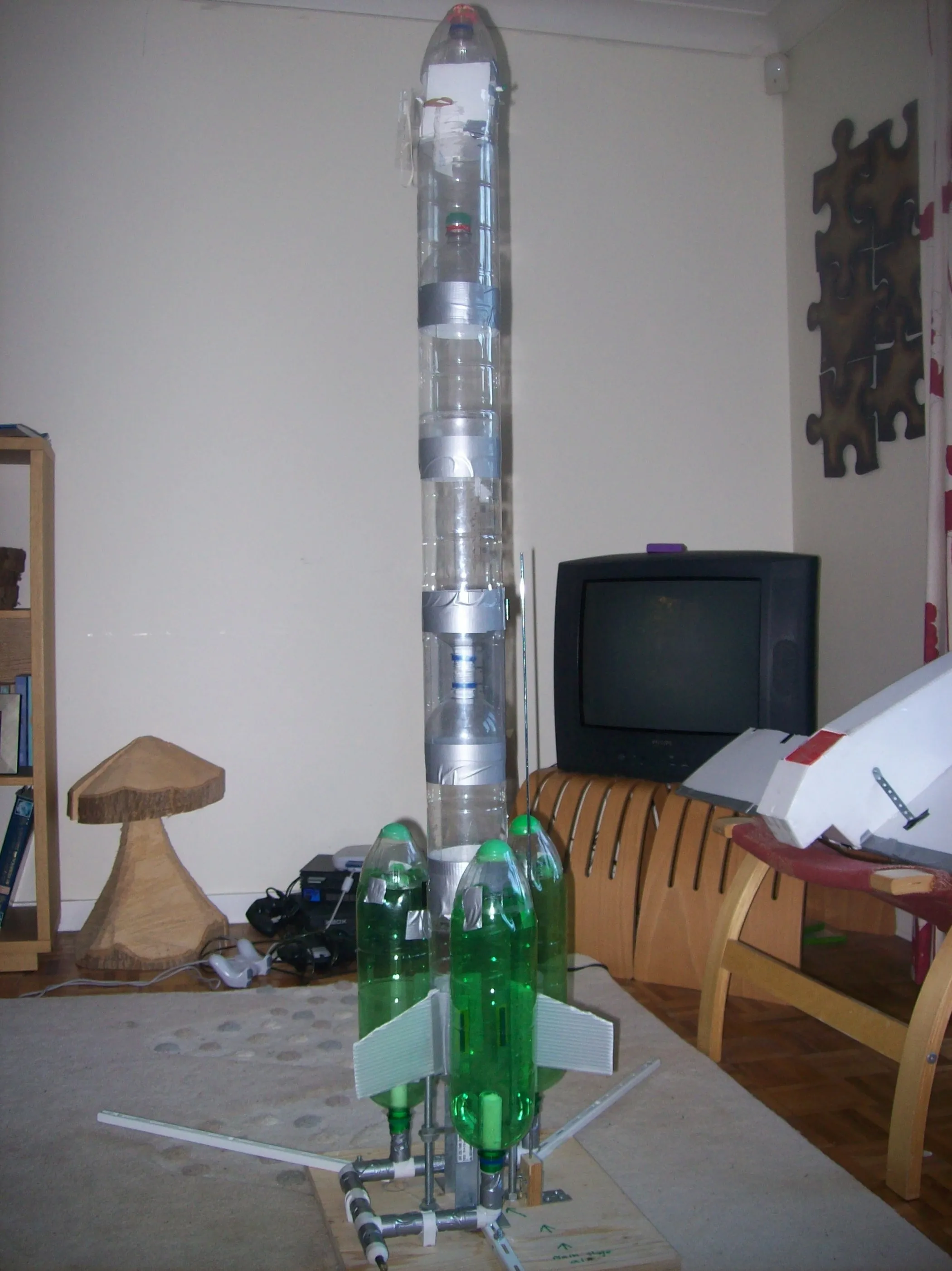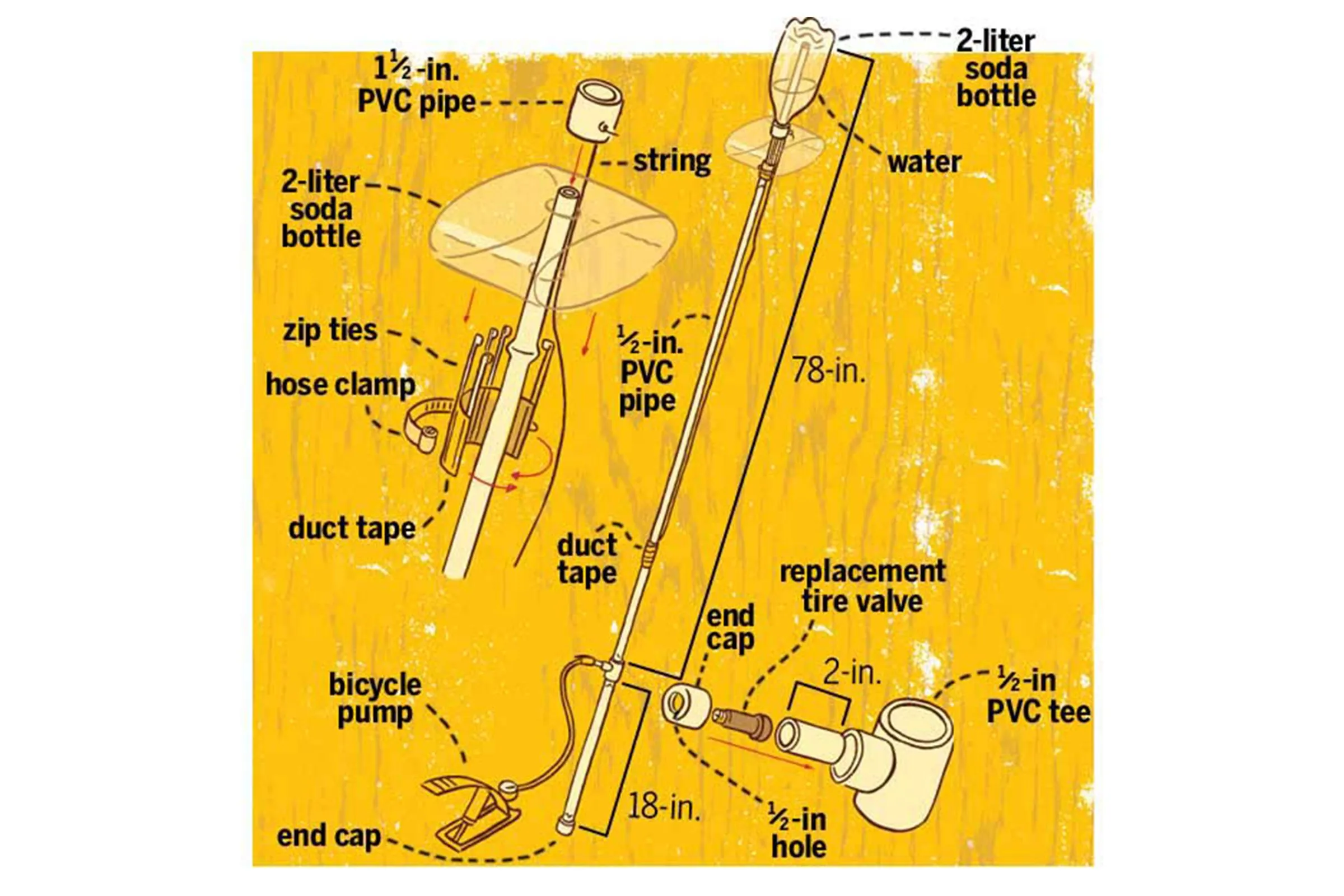Water rockets are a thrilling and educational DIY project that combines science with a bit of fun. They utilize the principles of aerodynamics and physics to create a rocket that soars through the air using just water and air pressure. Whether you’re a student eager to learn about propulsion or a parent looking for a fun activity to do with your kids, building a water rocket is a fantastic way to engage with science in a hands-on manner. Plus, the satisfaction of watching your rocket launch high into the sky is unbeatable!
Materials Needed

To build your very own water rocket, you’ll need a few basic materials. Here’s a handy list to get you started:
- Plastic Bottle: A 1-liter or 2-liter soda bottle works perfectly as the body of your rocket.
- Water: You’ll need to fill the bottle partially with water. About one-third full is ideal.
- Cork: A cork that fits snugly in the bottle opening will help contain the pressure until launch.
- Pump: A bike pump with a needle adapter is essential for pressurizing the bottle.
- Cardboard or Plastic Fins: To stabilize your rocket during flight. You can cut these into triangular shapes.
- Duct Tape: This handy tool will help secure the fins to the bottle.
- Safety Goggles: Always wear these to protect your eyes during the launch.
Here's a simple table summarizing the materials:
| Material | Description |
|---|---|
| Plastic Bottle | 1-liter or 2-liter soda bottle for the rocket body. |
| Water | Used to create thrust when pressurized. |
| Cork | Seals the bottle until launch. |
| Pump | Pressurizes the water rocket. |
| Fins | Stabilizes the rocket's flight. |
| Duct Tape | Secures components together. |
| Safety Goggles | Protects your eyes during launch. |
With these materials in hand, you’re all set to embark on your water rocket adventure!
Also Read This: Download Pictures from Adobe Stock in a Few Easy Steps
Step-by-Step Instructions

Making a water rocket is an exciting DIY project that combines science and fun! Here’s a straightforward guide to help you get started:
- Gather Your Materials: You will need:
- A plastic bottle (1 or 2-liter soda bottle works best)
- Water
- A cork that fits snugly in the bottle opening
- A bicycle pump with a needle adapter
- Cardboard for fins (optional)
- Tape or glue
Also Read This: How to Change Your Focus on Behance Fine-Tuning Your Portfolioâs Main Showcase Projects
Tips for Successful Launches
Ready to take your water rocket launching to the next level? Here are some handy tips to ensure your rocket reaches new heights:
- Perfect the Water Ratio: Experiment with different water levels. Too much water can weigh it down, while too little may not provide enough thrust. Aim for around one-third of the bottle's capacity.
- Enhance Stability: If you're using fins, make sure they are symmetrical and securely attached. This will help the rocket fly straight.
- Choose the Right Launch Angle: For maximum altitude, launch your rocket at a slight angle (around 30 degrees) rather than straight up.
- Weather Considerations: Wind can affect the trajectory of your rocket. Try launching on a calm day for the best results!
- Safety First: Always wear safety goggles and ensure everyone is at a safe distance during the launch.
- Record Your Results: Take notes on what works and what doesn’t. Keep track of water amounts, air pressure, and launch angles to repeat successful launches!
Also Read This: Can You Earn Money from iStock? A Guide to Turning Creativity into Revenue
5. Safety Precautions
Before launching your water rocket, it’s essential to prioritize safety. Even though this is a fun DIY project, there are a few precautions you should take to ensure everyone enjoys the experience without any mishaps.
- Choose a Safe Launch Area: Select an open space away from people, pets, and anything fragile. A flat, grassy area is ideal.
- Wear Protective Gear: Consider wearing goggles to protect your eyes from any unexpected splashes or rocket debris.
- Check for Wind Conditions: Avoid launching on windy days. Strong gusts can affect the rocket's trajectory and might lead to accidents.
- Supervise Kids: If children are involved, ensure they are supervised at all times. It’s crucial to explain the importance of staying at a safe distance during the launch.
- Use Proper Materials: Ensure your rocket components are sturdy and securely attached to avoid breakage during flight.
- Test Launches: Conduct a few dry runs to check your setup before the actual launch. This helps identify any potential issues.
By following these safety precautions, you can create a fun and secure environment for your water rocket launch!
6. Conclusion and Next Steps
Congratulations! You've successfully built your water rocket and taken it for a launch. This DIY project isn't just about the thrill of watching your rocket soar; it's also a fantastic opportunity to learn about physics, aerodynamics, and the scientific method.
So, what's next? Here are a few suggestions:
- Experiment with Design: Try modifying your rocket's shape or weight. How do different designs affect its flight? This exploration can lead to exciting discoveries!
- Organize a Launch Event: Gather friends or family for a friendly competition. Who can launch their rocket the highest? Create a leaderboard for some extra fun.
- Dive into Science: Explore the principles of rocket science further. Research topics like thrust, drag, and propulsion to enhance your understanding.
- Document Your Findings: Keep a journal of your launches. Note the altitude, flight time, and any modifications you made. This can be a great resource for future projects.
Remember, the sky's the limit when it comes to creativity and learning with your water rocket project!